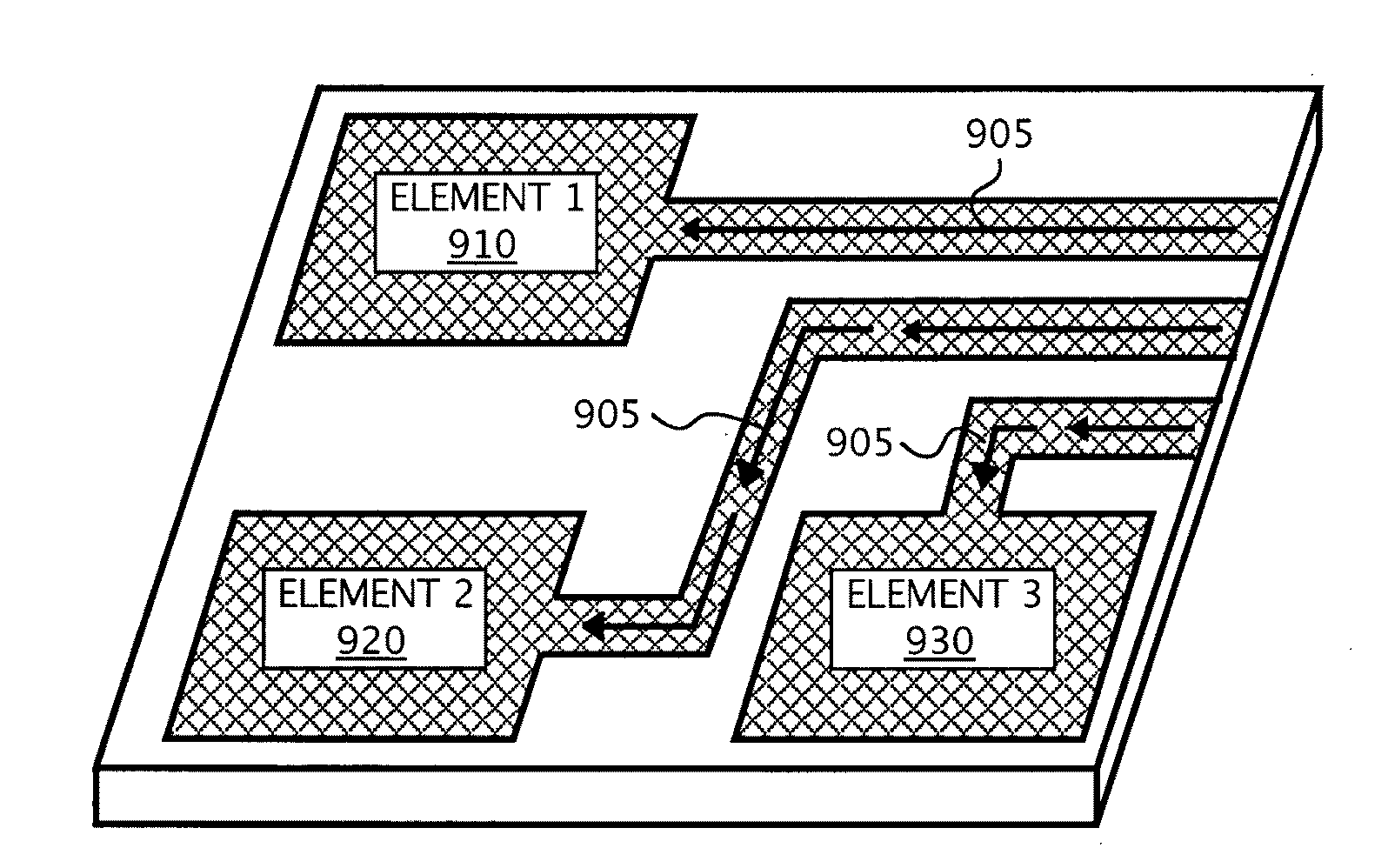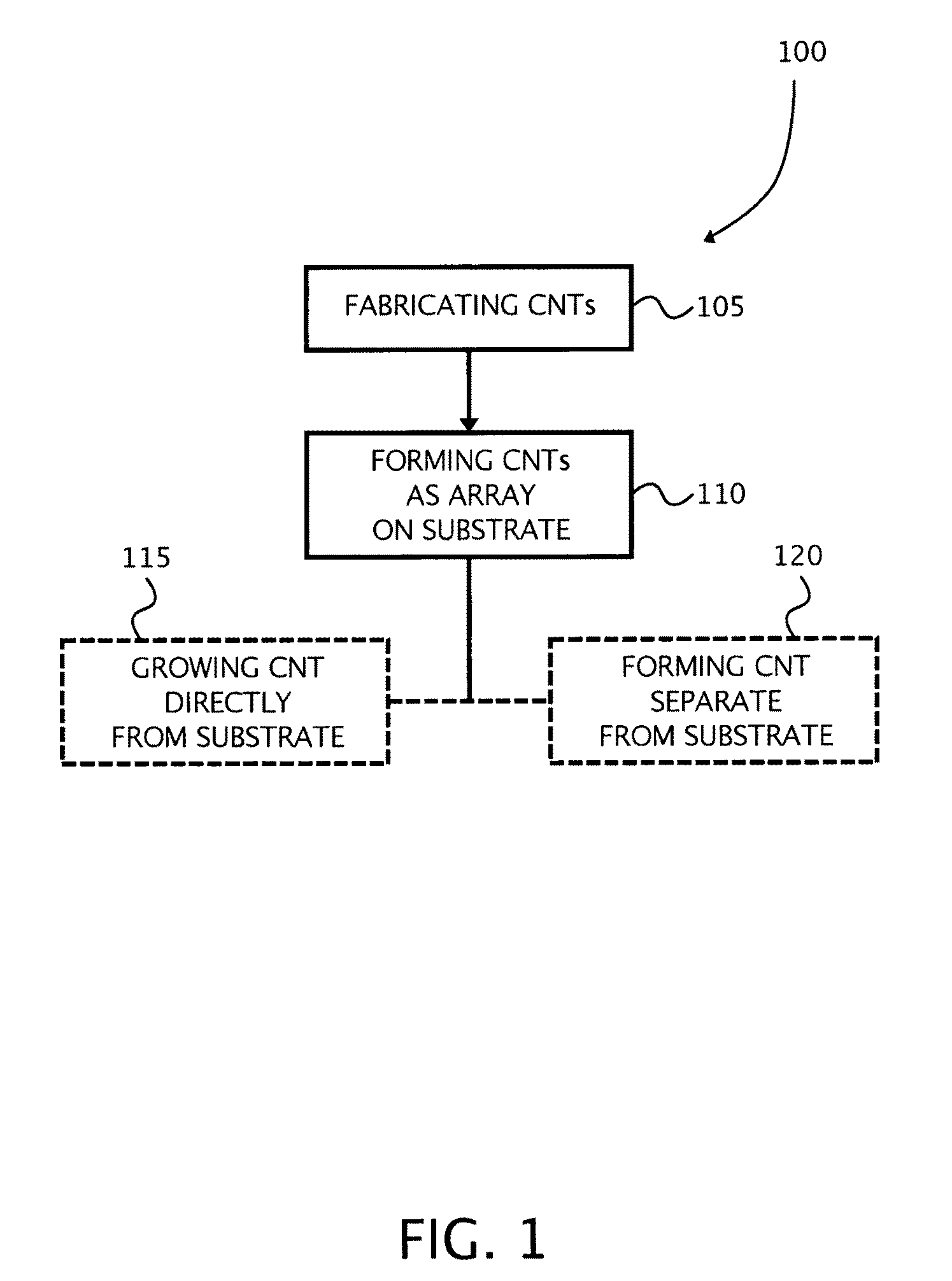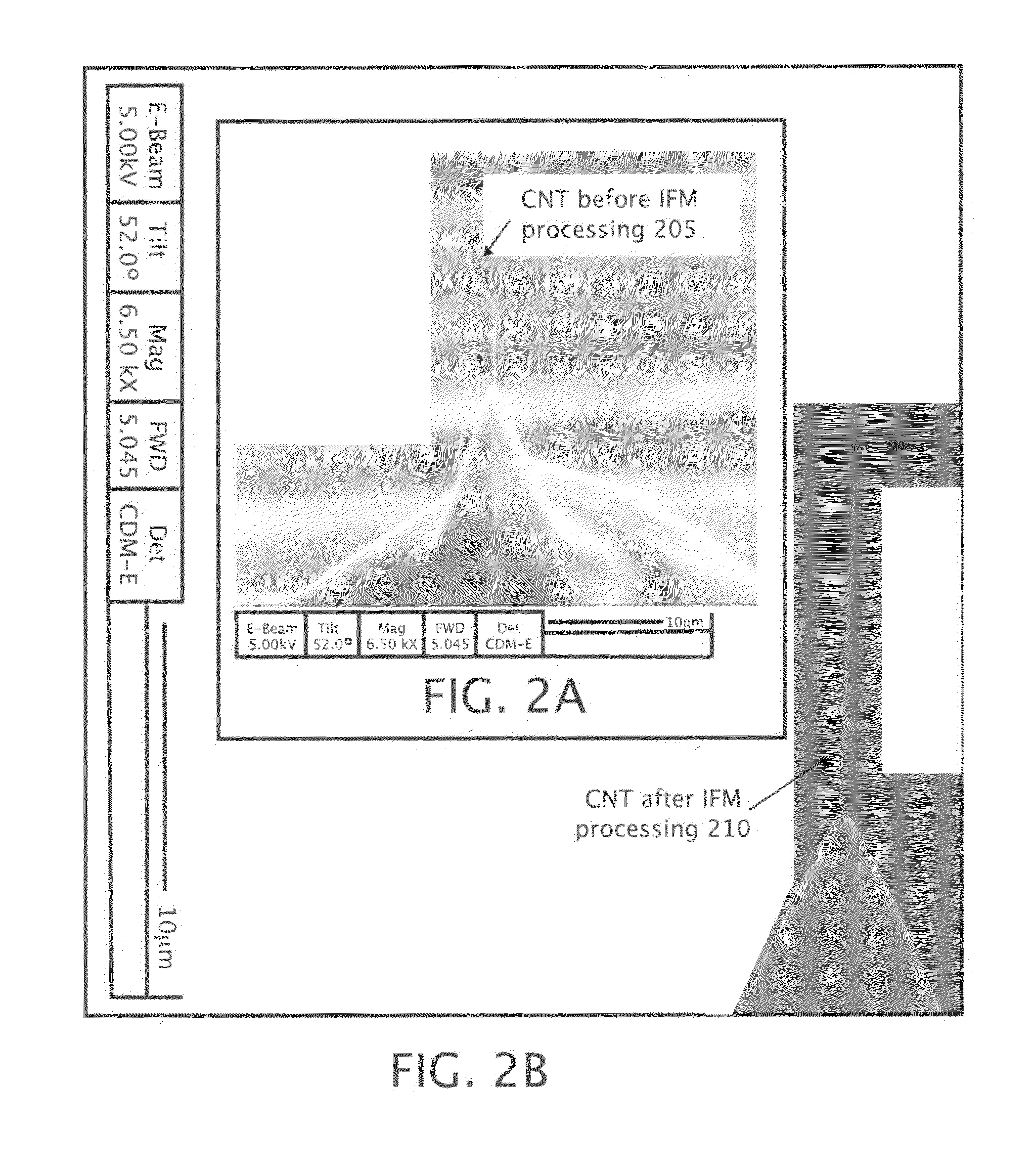Carbon nanotube signal modulator and photonic transmission device
- Summary
- Abstract
- Description
- Claims
- Application Information
AI Technical Summary
Benefits of technology
Problems solved by technology
Method used
Image
Examples
example 1
Controlled Manufacture of CNTs
[0048]The ability to manipulate nanomaterials in a controllable manner is needed for many nanotechnology applications. As-grown CNTs, for example, do not always exhibit the desired shape and configuration ideal for a given application but require further manipulation to render them suitable. In nanotransistors, the bends and kinks along the length of a CNT can change the bandgap of the CNT, thus altering its behavior. Modus Nanotechnology has fabricated multiple CNT nanoantenna geometries and orientations having lengths suitable for resonant interaction with photon wavelengths that range, for example, from the optical regime to the infrared. CNTs formed into functional geometries can perform as the functional element in a photonic device or as a nanoantenna.
[0049]IBM (ion beam molding) can be used to create functional nanoantenna geometries. FIGS. 2A and 2B illustrate a CNT before and after IBM according to some embodiments of the present invention. In ...
example 2
CNT Nanoantennas
[0052]The performance metrics of the nanoantennas were tested and the results showed that CNTs fabricated into functional antenna forms, demonstrate photonic properties and antenna efficiencies comparable to theoretical values. Measured polarization proved dependent upon the orientation of the CNT and this property can lead to functional carbon nanotube based photonic logic device elements.
[0053]A nanotube acts as an antenna re-radiating light with an electric field E, polarized in the plane parallel to the CNT. A polarizer, with its axis of polarization rotated by an angle θ to this plane, transmits radiation with a projected electric field E′=E cos θ, and the corresponding observed intensity is given by the law of Malus INT=∝(E′)2=E2 cos θ. A general equation describing the scattering maxima from a random array of dipole antennas is:
L=m(λ2)f(θ,n)
where L is the scattered light, m is the ratio of the speed of electromagnetic propagation in the antenna to that in a va...
example 3
Measured Efficiency and Polarization Dependence of a CNT Nanoantenna
[0057]Example 2 shows the polarization relationship between the incident light and the light emitted from an oriented CNT. Since the polarized light must be coming from the CNT only, the emission data can be used to calculate the efficiency of a CNT nanoantenna. The E fields scattered by a cylinder can be expressed in a concise manner by resolving the incident and scattered fields into perpendicular and parallel components and consider the fields at large distances compared to its wavelength.
[0058]FIG. 4 illustrates polarization considerations for a CNT nanoantenna according to some embodiments. For unpolarized light incident on the cylinder axis, the scattered field, polarized parallel and perpendicular to the axis can be expressed in terms of the incident fields through the following matrix equation.
(EllsE⊥s)=3π2χtΩsinζk(rsinζ-zcosζ)(T1T4T3T2)(ElliE⊥i)
where χ and Ω are apparatus efficiency and scattering solid ang...
PUM
 Login to View More
Login to View More Abstract
Description
Claims
Application Information
 Login to View More
Login to View More - R&D
- Intellectual Property
- Life Sciences
- Materials
- Tech Scout
- Unparalleled Data Quality
- Higher Quality Content
- 60% Fewer Hallucinations
Browse by: Latest US Patents, China's latest patents, Technical Efficacy Thesaurus, Application Domain, Technology Topic, Popular Technical Reports.
© 2025 PatSnap. All rights reserved.Legal|Privacy policy|Modern Slavery Act Transparency Statement|Sitemap|About US| Contact US: help@patsnap.com



